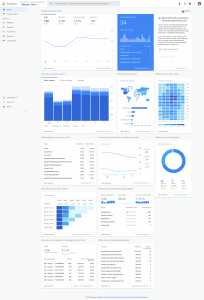— February 7, 2018

We’re losing a staple of Main Street faster than expected. Nationwide, bank branch visits have been cut in half over the past 20 years.
According to data from S&P Global Market Intelligence, this drop has led to a rash closing of physical branches. Since the financial crisis, banks have closed more than 10,000 branches – an average of three a day.
In the first nine months of 2017, nearly 1,700 branch locations closed their doors.
Industry experts have forecasted this move for some time, citing the success of FinTech firms, rising brick-and-mortar costs and the general consumer migration to all things digital. But few anticipated the public reaction these closures would receive.
Small communities worldwide are facing a shortage of in-branch options – some even going as far to categorize themselves as “banking deserts.”
It’s causing quite the uproar for account holders of all ages. Even 80 percent of millennials say they want the option to visit a bank branch in person. Branches provide a sense of authenticity, a face to the relationship and a place for immediate, personalized service.
Consumers depend on physical banking locations. This need is not just voiced, but it also holds a monetary value.
Nathan Stovall of S&P Global Market Intelligence explains how financial institutions aren’t ready to completely part with brick-and-mortar just yet. These locations play a critical role in deposit profitability and account openings.
Stovell’s analysis found that of 80 percent of Bank of America sales still occur in-branch. JPMorgan echoes such findings with 75 percent of all deposit growth originating from branches. In addition, JPMorgan reports the average account holder still visits multiple times a quarter.
While these giants remain steadfast in their mixed presence, they’ve taken steps to dramatically re-invent the account holder experience. This includes cutting physical locations and getting smart about costs and in-branch offerings.
Let’s explore how financial institutions of all sizes can reimagine in-branch banking to create a profitable presence within the communities they serve.
Profitable In-Branch Banking: 5 Tips
1. Redefine the Customer Journey
The majority of new accounts are still opened in-branch; it’s simply an ingrained starting point for consumers. If we want to cut locations, digital alternatives must be enacted and humanized with smart UX initiatives – especially for activities as critical as new account openings.
In 2017, pick up has been slow. Only 18 percent of banks and credit unions offer mobile account opening. And while two-thirds allowed for online account opening, the majority relied on in-branch to facilitate new accounts.
Without forethought into every potential interaction, financial institutions (particularly smaller banks and credit unions) could cannibalize their cost-saving initiatives by cutting branches.
2. Recognize the Cost of Retail Space
Even during the “retail apocalypse” when space is plentiful, rent still isn’t cheap. Premium spaces on America’s busiest main streets and promenades will certainly cost you.
How much is walk-in traffic really contributing to your business? Do you need a premium location? While a main street presence is a nicety, it’s far from a necessity. Consider venturing to less desirable locations to cut costs.
3. Cut Costs with Digital Aids
Automated branch banking provides the familiar setting of a branch location, without the overwhelming investment in human capital. Up-and-coming features include:
- Digital check deposits
- Smartphone-compatible ATMs
- Flexible withdrawals – not just $ 20 dollar bills
- Virtual tellers/AI
4. Cater to Small Business Account Holders
More than half of all business transactions are conducted at a branch. What’s more? Small businesses are traditional in their check usage. In fact, over half cited checks as their preferred payment method.
This can create some conundrums when planning your shift to digital. Be sure to analyze the small business experience and develop tailored offerings and experiences for this unique subset. Consider personalized mobile apps, streamlined business deposit processes, as well as digital check deposit and ordering.
5. Know When to Close Up Shop
Keeping in-branch banking isn’t always the right answer. While critical to the banking experience, not every location will produce a return. It’s important to analyze the market and your account holder demographic.
Ask yourself: is in-branch right for my account holders? With regular cost-analysis and market research, you’ll be able to make a tactical decision about the future of branch banking within your institution.
Reshaping the In-Branch Experience
So maybe the move off Main Street isn’t the end of the world? Perhaps, a small jump to 2nd Street is all you really need (with the help of a few high-tech tools, of course)!
Remember, having an in-branch presence is the perfect opportunity to educate your account holders on the products you offer and make them aware of available promotions within your financial institution. It also allows account holders to speak with your branch personnel on their financial needs. Plus, it provides a great place for you to hold local financial education seminars.
Business & Finance Articles on Business 2 Community
(82)




